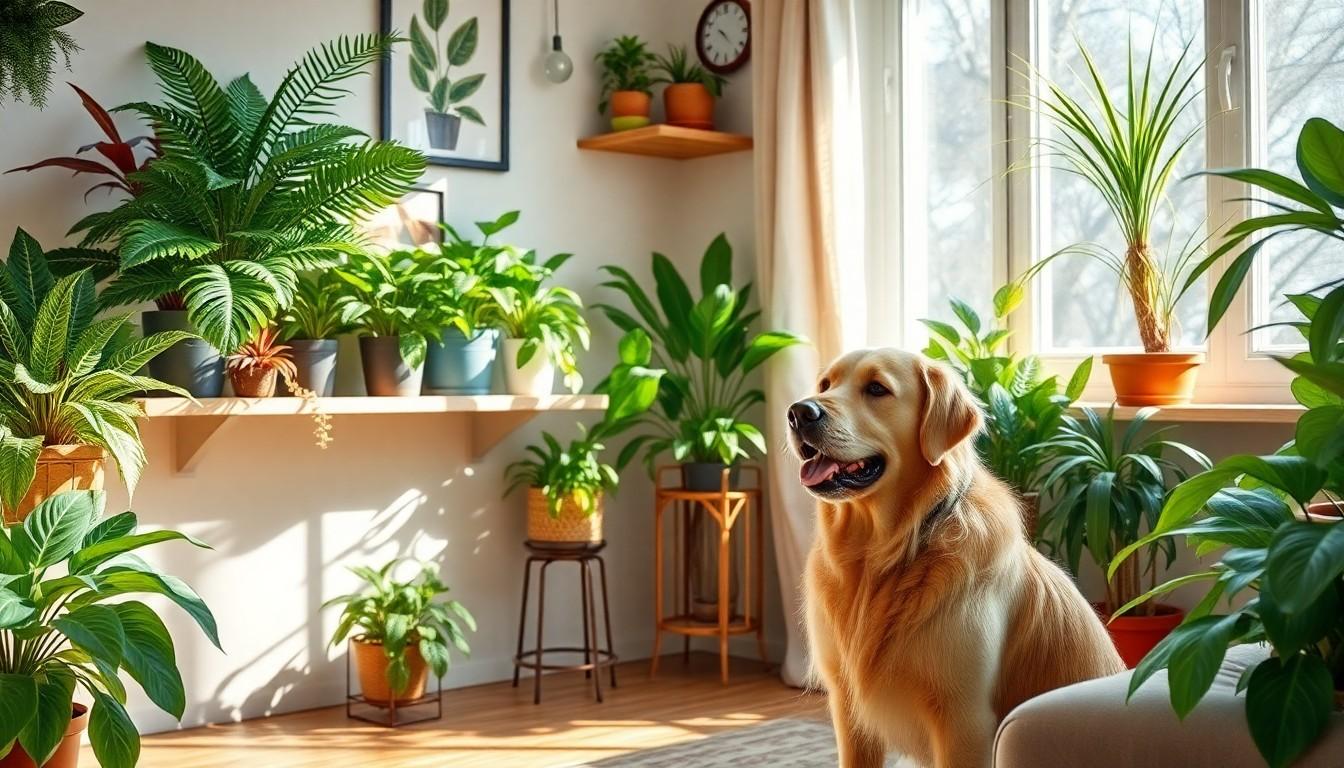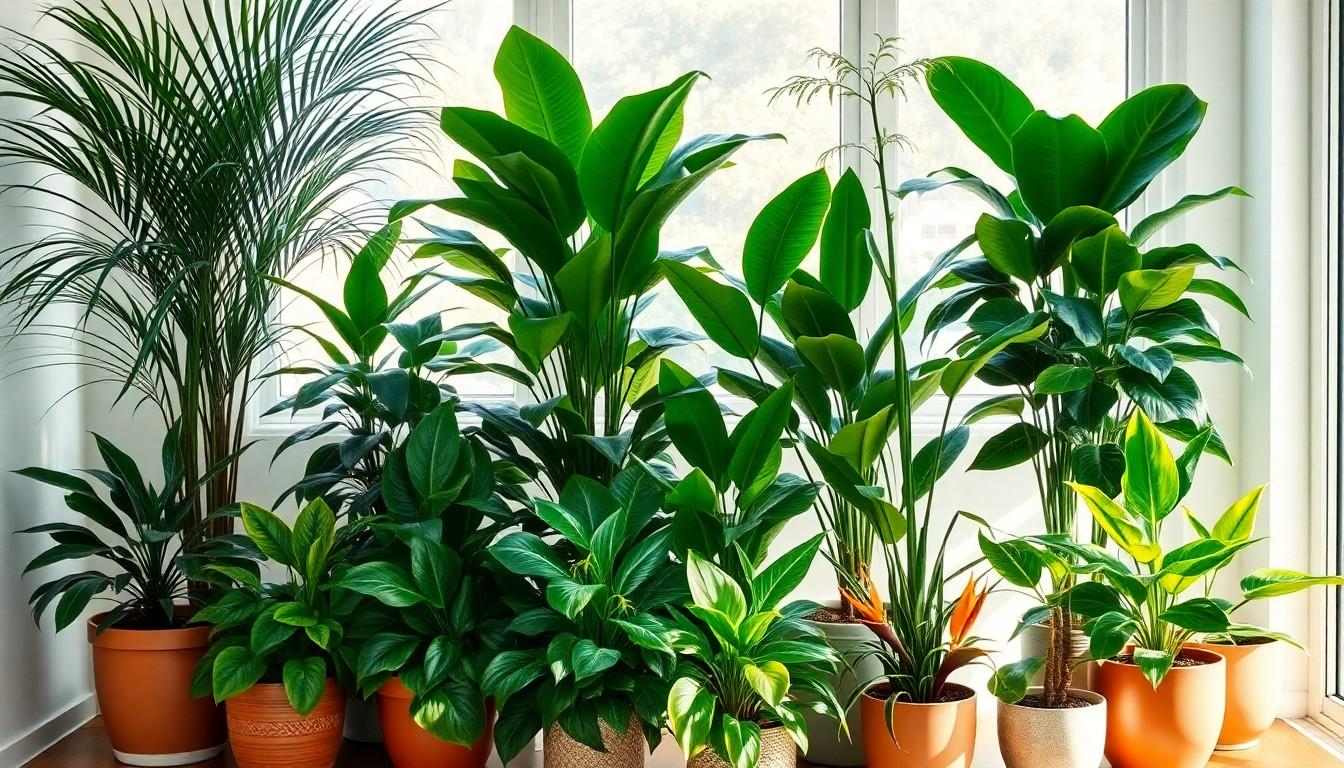Phone:
(701)814-6992
Physical address:
6296 Donnelly Plaza
Ratkeville, Bahamas.

Bringing greenery into the home can breathe life into any space, but for dog owners, it’s essential to tread carefully. Some house plants might look like the perfect addition to a cozy corner, but they could turn into a canine catastrophe. Imagine your pup, blissfully unaware, munching on a toxic leaf while you sip your coffee, thinking you’ve just created a botanical paradise. Spoiler alert: that paradise could quickly become a vet visit.
Being informed about house plants that are toxic to dogs ensures a safer home environment. Certain plants may contain harmful substances that can affect a dog’s health if ingested.
Identifying symptoms early can make a significant difference in a dog’s recovery. Common signs include vomiting, diarrhea, and lethargy. Additionally, excessive drooling or coughing may indicate plant poisoning. Some dogs may exhibit unusual behavior or signs of pain. When any of these symptoms appear, immediate attention from a veterinarian is crucial.
Recognizing toxic plants protects dogs and promotes a healthier living space. Many households contain plants that are common but dangerous; awareness can prevent severe health issues. Educating oneself about potentially hazardous plants can help in making informed decisions when selecting house greenery. Researching plant safety guides encourages responsible pet ownership and enhances overall peace of mind. Proper identification contributes to a secure and enjoyable home for both dogs and their owners.

Understanding which plants are harmful helps ensure a safe environment for dogs. Awareness of toxic varieties aids in preventing potential health risks.
Certain common houseplants pose significant risks to dogs. Sago palm contains cycasin, which can lead to liver failure. Oleander, known for its stunning flowers, contains toxic cardiac glycosides, causing severe heart issues. Philodendron can cause mouth irritation and difficulty swallowing due to calcium oxalate crystals. Dieffenbachia, or dumb cane, leads to similar oral irritation, resulting in swelling and potential breathing issues. Moreover, pothos also contains calcium oxalate, causing gastrointestinal upset or irritation.
Some less recognized houseplants also present dangers to dogs. The peace lily has mild toxicity, resulting in oral irritation and vomiting. Snake plant’s saponins can lead to nausea and diarrhea. Similarly, the jade plant may cause lethargy and a decrease in appetite. In another case, the rubber plant’s sap may irritate a dog’s digestive system or skin. Lastly, the bird of paradise can cause vomiting and diarrhea in dogs that ingest its leaves. Each of these plants requires careful consideration by dog owners.
Choosing non-toxic houseplants helps create a safe environment for dogs. Several options thrive indoors without posing risks to pets.
Spider plants, Boston ferns, and bamboo palms remain safe. Parlor palms and African violets also provide greenery without danger. These plants add beauty while ensuring health and safety for furry companions. They thrive in various lighting conditions and need minimal maintenance, making them ideal for busy households. Pet owners can confidently enjoy these plants, knowing they won’t harm their pets.
Identify non-toxic options when selecting houseplants. Research plant types to ensure safety for dogs. Position plants out of reach to discourage chewing, even with safe varieties. Utilizing hanging baskets allows plants to thrive while staying away from curious pups. Regularly monitor plants for signs of wear or damage. Being aware of any changes ensures the safety of both plants and pets.
Keeping dogs safe from toxic plants requires proactive measures. Implementing specific strategies ensures a pet-friendly environment.
Training a dog to avoid certain areas can significantly reduce the risk of plant poisoning. Positive reinforcement helps. Rewarding desired behaviors encourages compliance. Using commands like “leave it” teaches dogs not to approach harmful plants. Regularly practicing these commands reinforces their effectiveness. A well-trained dog is less likely to explore unsafe plants.
Designing a dog-safe space is crucial for pet protection. Choose non-toxic houseplants when selecting greenery for your home. Position plants on high shelves or in hanging planters. This keeps them out of reach. Fencing off plant areas or using pet gates creates protected zones. Regularly check the area for any new plants that might be introduced inadvertently. Maintaining a clutter-free environment helps prevent accidents, thereby ensuring the safety of dogs.
Awareness is key for dog owners when it comes to houseplants. By understanding which plants are toxic and which are safe, they can create a nurturing environment for their pets. Choosing non-toxic options and implementing safety measures can significantly reduce the risk of accidental poisoning.
Regular monitoring and training can further ensure that dogs stay safe around plants. With the right precautions in place, it’s possible to enjoy the beauty of houseplants without compromising a pet’s health. Prioritizing pet safety while cultivating indoor greenery leads to a happier and healthier home for both dogs and their owners.